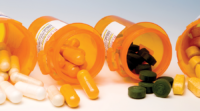Do you know how your pharmacy measures up?
See how your pharmacy compares to others in the 2015 edition of the NCPA Digest, an annual publication from the National Community Pharmacists Association (NCPA), which profiles the $81.4 billion independent community pharmacy market.
“The Digest is the definitive financial benchmark for independent community pharmacy,” said Kevin Schweers, NCPA spokesman. “Pharmacy owners can utilize it to see how their pharmacy stacks up.”
The 2015 Digest was compiled using 2014 data from more than 22,000 pharmacies nationwide.
Here’s a look at the surprising, new and worrisome trends discovered in this year’s Digest.
Expanding adherence programs
Six years ago, NCPA committed to making adherence a core competency for pharmacists by 2015, Schweers said. And that’s where it’s headed.
In 2014, 76 percent of independent pharmacies offered adherence or medication synchronization services.
“While our goal remains 100 percent, it’s gratifying to see the importance of medication adherence services embraced and implemented by the vast majority of independent community pharmacies,” Schweers said.
Substantial charitable giving
Independent pharmacies’ connections with their communities run deeper than financial contributions, but contribute they did.
“According to the Digest, 63 percent of community pharmacies support five or more community-based organizations,” Schweers said. “And the typical financial contributions independent pharmacies make to their communities is $3,000 per pharmacy!”
As an industry, independent pharmacy donates more than $65 million, or 2.6 percent of pre-tax profit.
“If independents were one corporation, not only would it be in the Fortune 50, ahead of household names like ©Disney, Google™ and McDonald’s®, it would be one of the most generous charitable givers in all of corporate America,” Schweers said.
Decrease in number of pharmacies and prescriptions dispensed
The overall number of independent pharmacies decreased from 22,814 pharmacies in 2013 to 22,478 in 2014. Prescriptions dispensed also decreased from 62,424 per pharmacy in 2013 to 61,568 in 2014.
Schweers said NCPA is fighting these downward trends by advocating for government policies that mitigate abusive maximum allowable costs (MACs), direct and indirect remuneration (DIR) fees, and exclusionary preferred pharmacy networks.
“If community pharmacies can continue to embrace medication adherence and complete their medication therapy management (MTM) cases, then hopefully their number of prescriptions filled will increase,” Schweers said.
Declining prescription revenue
Declining and negative reimbursement rates are a growing challenge, which is especially troubling as independents rely on prescriptions for 92 percent of their revenue.
New regulations could help balance this trend.
“Starting in 2016, Medicare is requiring drug plan sponsors, and the pharmacy benefit managers (PBMs) that administer their plans, to update MACs on a timely basis,” Schweers said. “We hope that will help and, to that end, are pressing Medicare officials and Congress to ensure proper enforcement of this mandate.”
Schweers said pharmacies can also fight this trend by improving patient adherence and diversifying revenue streams with niches like compounding, long-term care or the front end.
“The Digest underscores the fact that pharmacists must take additional steps with urgency to bolster their community pharmacy’s viability,” he said.












